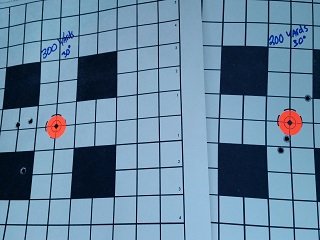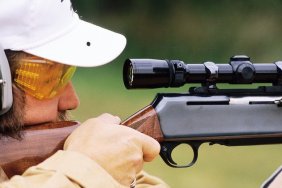 As hunters, we have a lot of responsibility when it comes to following rules and representing all other hunters in our actions. However, being a hunter requires a lot more than just good stewardship and being generally responsible; it requires extra skills and abilities. Here are some tasks that every hunter should master.
As hunters, we have a lot of responsibility when it comes to following rules and representing all other hunters in our actions. However, being a hunter requires a lot more than just good stewardship and being generally responsible; it requires extra skills and abilities. Here are some tasks that every hunter should master.
How to Sight In a Rifle
Every hunter knows that having an accurate rifle is an important ingredient to having hunting success. However, a lot of shooters and hunters don’t know how to sight in their scope or sights. I admit that when I was a young hunter, I did not understand how to adjust my first scoped rifle until a mentor walked me through it.
Open sights, or iron sights, are vey misunderstood by most gun owners, but there is a basic rule to follow when sighting in that won’t let you fail. All you have to do is move your rear sight in the direction you want your bullet to move on your target. It’s that easy. Shoot too far left, move your rear sight to the right and the bullet will follow, and the same with the elevation adjustment.
Most rifle manufacturers make this process easy by manufacturing front sights that are not adjustable, but you still have to remember to move you rear sight in the direction you want the bullet to move on target, and not away from the direction you want your bullet to travel.
Rifle scopes are more complicated to accurately adjust but they are still easy if you just understand how they work. For starters, most rifle scopes have adjustment dials that include an elevation (up and down) dial and a windage (right and left) dial. This makes sighting in extremely easy assuming that you have a good rest and are shooting accurately.
The typical manner in which a scope adjusts is to move the dials in one direction or the other which makes an audible or silently-felt click. For most scopes, each click will cause ¼” of bullet travel travel at 100 yards. This standard is called minute of angle (MOA) and some manufacture’s scopes can vary from 1/8” to ¼” of movement, but ¼” is the most prevalent. For example, if your bullet is hitting an inch to the left, you would adjust four clicks to the right. Finally, sighting in is as simple as ‘clicking’ your scope dials in the directions you want your bullet to travel on target.
One last thing to always consider when sighting in is to shoot in three shot groups. When you shoot three rounds, you get an accurate idea of where your bullet impact is by viewing a group. If you shoot a single shot to sight in, you might have jerked it or flinched and you would not know. Two shots are better, but if one of those two shots are incidentally pulled or jerked off target, you wouldn’t know which one was the errant round. Three shots compensate for a pulled or missed shot as you will be assured that at least two shots are accurate. Three shot groups represent a good average and they are the standard in the military and the civilian shooting world.








